Researchers have found an image of a scantily-clad Phaedra, who, in Greek mythology, fell in love with her stepson Hippolytus
PARCO ARCHEOLOGICO DI POMPEI VIA REUTERS
Excavations in Pompeii's 'House of the Chaste Lovers' have uncovered a multitude of millennia-old frescoes
Don't Miss
Most Read
Trending on GB News
Archaeologists in Pompeii have made a fresh discovery in the doomed city's ruins which has shed light on the ancient Romans' erotic tastes.
Excavations in the site's "House of the Chaste Lovers" have uncovered a multitude of millennia-old frescoes - adding to a deep back-catalogue of sexual imagery in Pompeii.
Among the newly-found erotic artworks, which have seen the light of day again for the first time in almost 2,000 years, sits a wall painting of a satyr and a naked nymph frolicking on a bed.
The richly-decorated home includes an altar depicting snakes and sacrificial offerings including a pinecone, an egg and a fig.
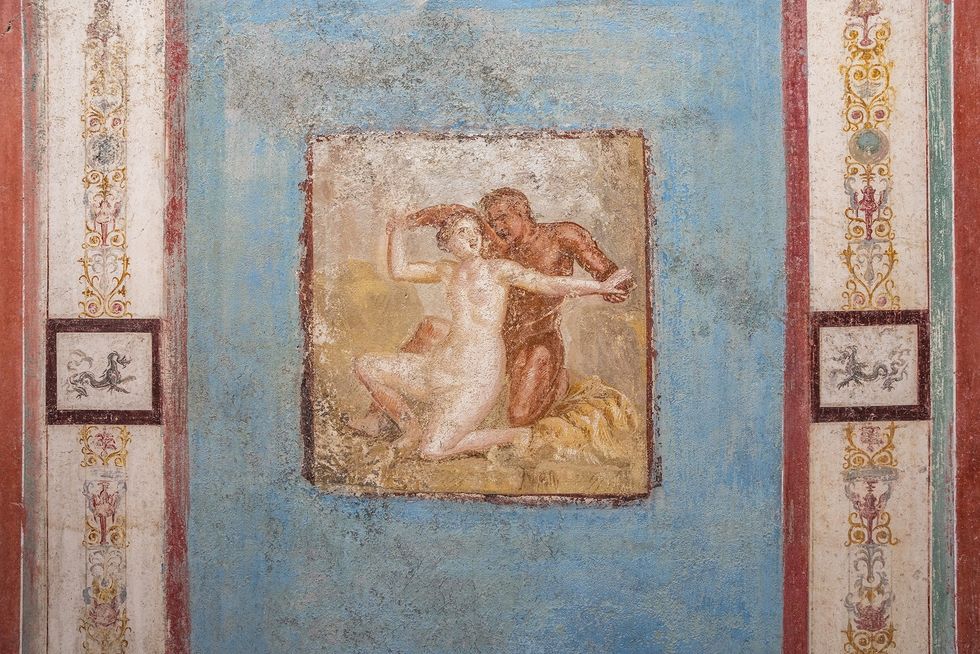
A satyr and a nymph can be seen in a sexual encounter in one fresco
PARCO ARCHEOLOGICO DI POMPEI VIA REUTERS
While inside the altar itself, excavators found a small bust of Dionysus - known to the Romans as Bacchus - perhaps the last offering made before Mount Vesuvius buried the city in 79 AD.
Elsewhere, researchers have found an image of a scantily-clad Phaedra, who, in Greek mythology, fell in love with her stepson Hippolytus - only to then accuse him of rape when he turned down her advances.
Legend says that Hippolytus was dragged to his death by his frenzied horses after his father Theseus summoned a huge bull from the sea which scared the animals.
After the act of paternal-cum-divine punishment, a guilt-stricken Phaedra then took her own life.
READ MORE ARCHAEOLOGY NEWS:
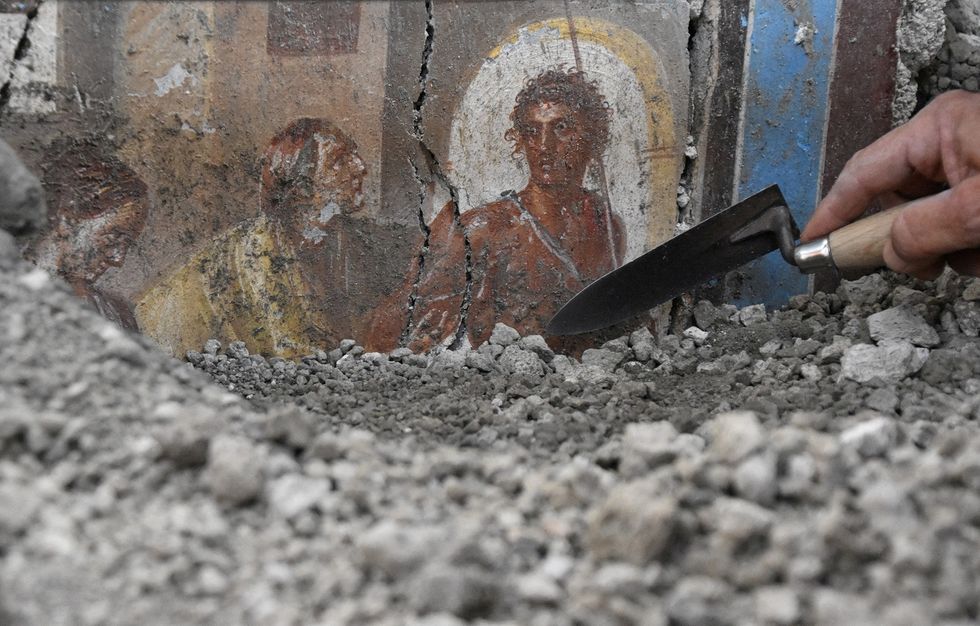
Researchers have found an image of a scantily-clad Phaedra, who, in Greek mythology, fell in love with her stepson Hippolytus
PARCO ARCHEOLOGICO DI POMPEI VIA REUTERS
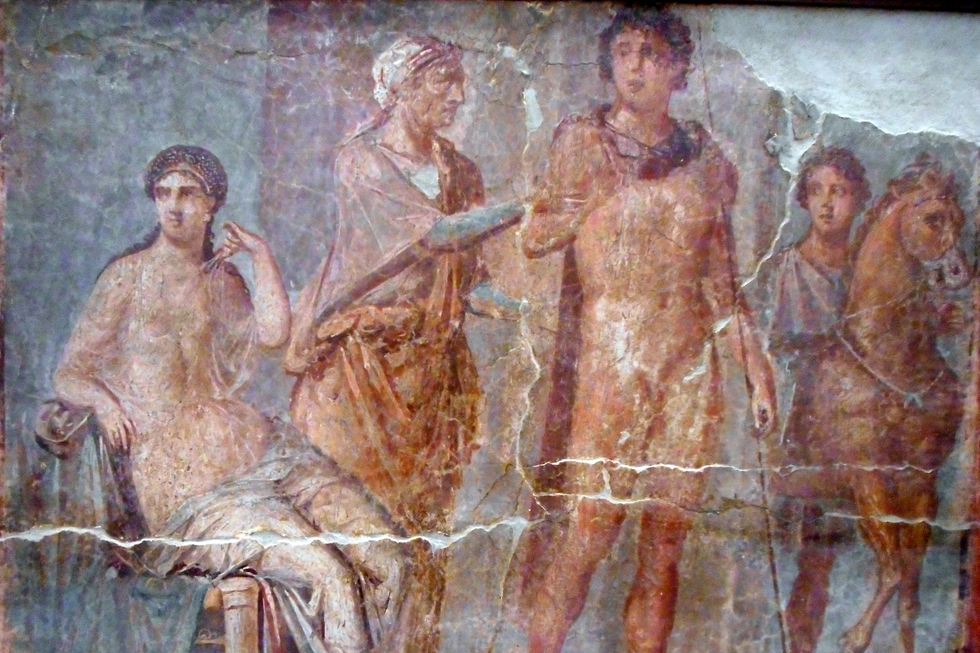
The painting of Phaedra bears a striking resemblance to this fresco in nearby Herculaneum
WIKIMEDIA COMMONS
The fresco of Phaedra and Hippolytus bears a striking resemblance to another fresco in nearby Herculaneum - which was destroyed by Vesuvius's pyroclastic flow as Pompeii succumbed to its volcanic ash.
But back in Pompeii, the discovery of the House of Chaste Lovers isn't the only sexual breakthrough in recent years.
In 2018, archaeologists uncovered another property featuring a fresco of fertility god Priapus weighing his penis on a scale, and Spartan queen Leda being seduced by the god Zeus disguised as a swan.
And across the city, more images of sexual positions have been found in private homes and - less surprisingly - in Pompeii's brothel, while locals painted phallic symbols on their walls in the belief they brought wealth, fertility and good luck.
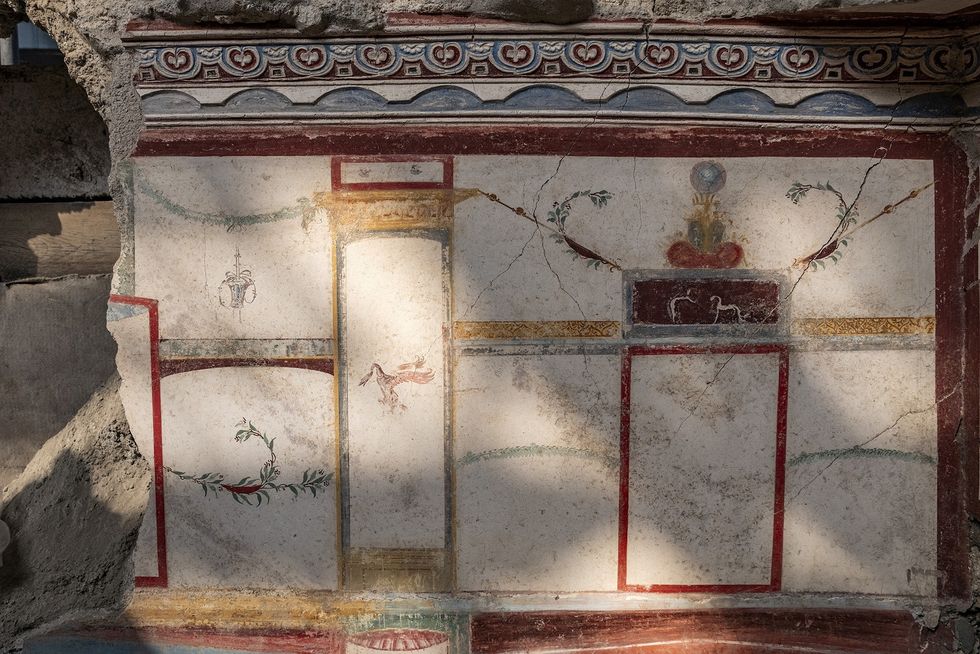
A depiction of a sacrificial altar can be seen painted on a wall in the property
PARCO ARCHEOLOGICO DI POMPEI VIA REUTERS
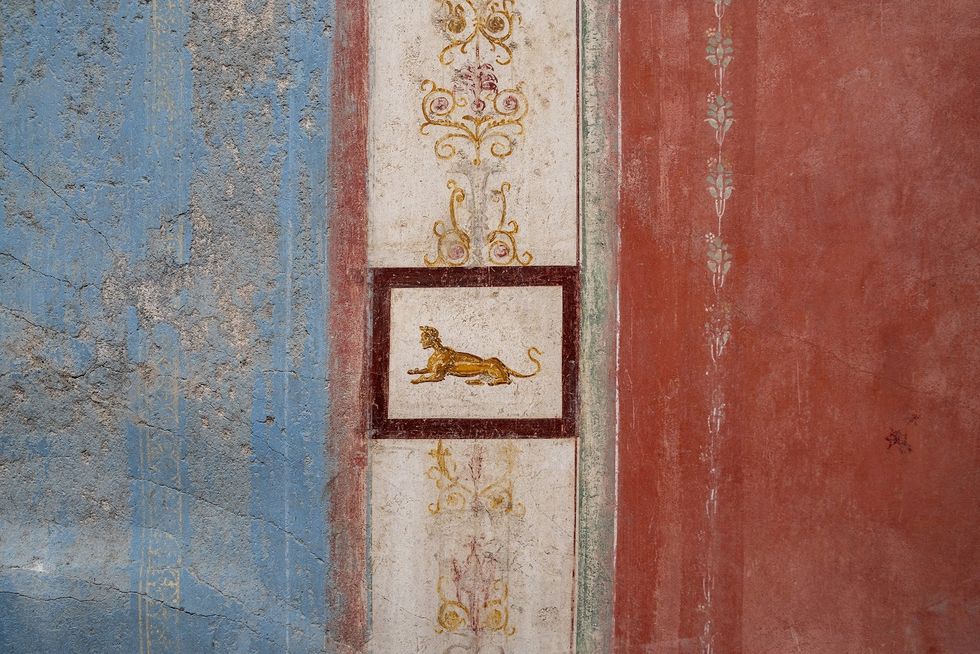
More wall paintings from the House of Chaste Lovers
PARCO ARCHEOLOGICO DI POMPEI VIA REUTERS
Though about a third of Pompeii still remains unexcavated, recent digs are still revealing more and more history by the day.
Gabriel Zuchtriegel, the House of Chaste Lovers site's director, said the home was notable for having no atrium - an inner courtyard typical of Roman architecture from the 6th century BC onwards.
He said: "The atrium was associated with rich Romans receiving their clients and supporters and as a place to display family heirlooms, but as Rome entered the second century AD, many freed slaves and merchants of humble origin were achieving social status while old money was slipping.
"More than an atrium, it was clothes and jewels that were beginning to show status. Having no atrium was starting to be a choice and we see that trend emerging at Pompeii."








